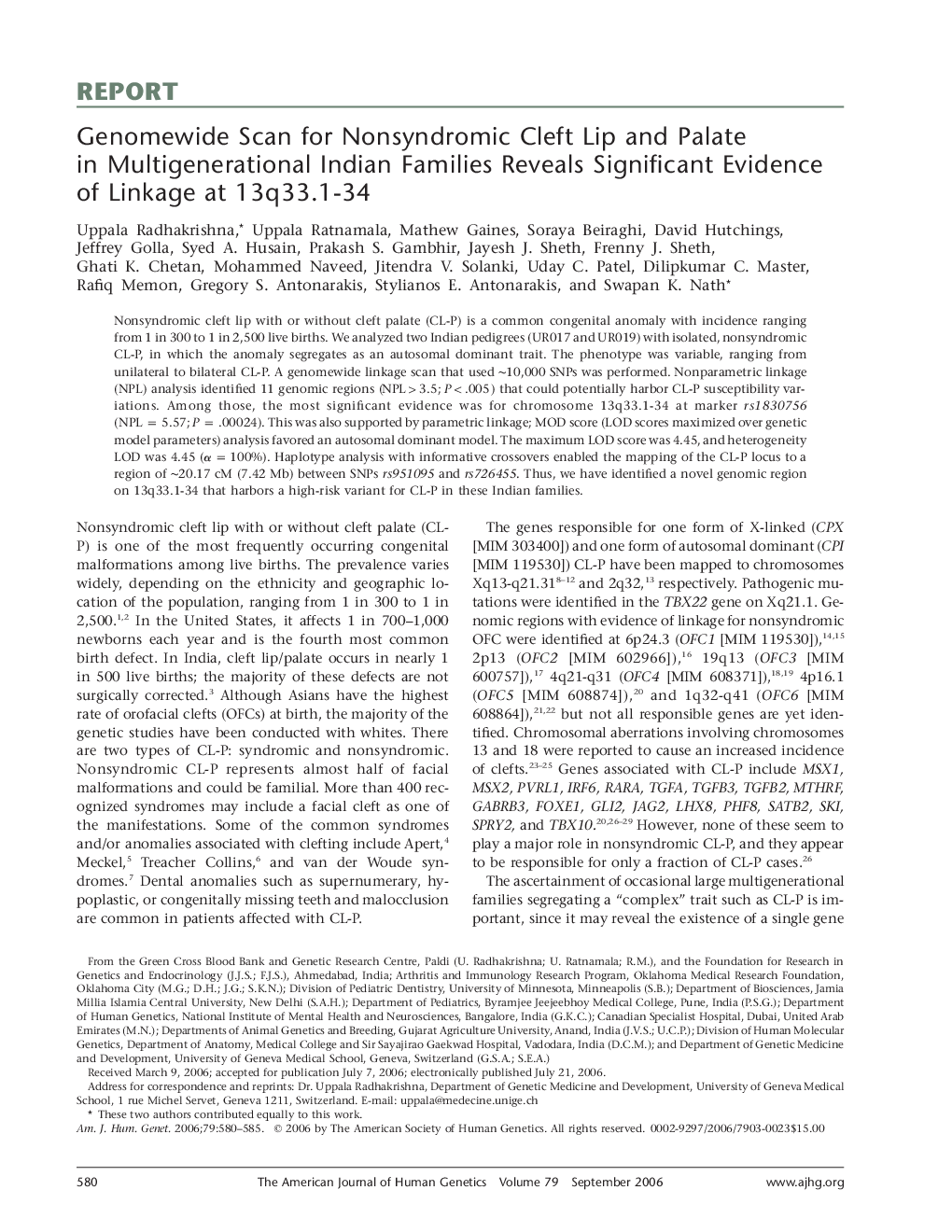| Article ID | Journal | Published Year | Pages | File Type |
|---|---|---|---|---|
| 2812402 | The American Journal of Human Genetics | 2006 | 6 Pages |
Nonsyndromic cleft lip with or without cleft palate (CL-P) is a common congenital anomaly with incidence ranging from 1 in 300 to 1 in 2,500 live births. We analyzed two Indian pedigrees (UR017 and UR019) with isolated, nonsyndromic CL-P, in which the anomaly segregates as an autosomal dominant trait. The phenotype was variable, ranging from unilateral to bilateral CL-P. A genomewide linkage scan that used ∼10,000 SNPs was performed. Nonparametric linkage (NPL) analysis identified 11 genomic regions (NPL>3.5; P<.005) that could potentially harbor CL-P susceptibility variations. Among those, the most significant evidence was for chromosome 13q33.1-34 at marker rs1830756 (NPL=5.57; P=.00024). This was also supported by parametric linkage; MOD score (LOD scores maximized over genetic model parameters) analysis favored an autosomal dominant model. The maximum LOD score was 4.45, and heterogeneity LOD was 4.45 (α=100%). Haplotype analysis with informative crossovers enabled the mapping of the CL-P locus to a region of ∼20.17 cM (7.42 Mb) between SNPs rs951095 and rs726455. Thus, we have identified a novel genomic region on 13q33.1-34 that harbors a high-risk variant for CL-P in these Indian families.
